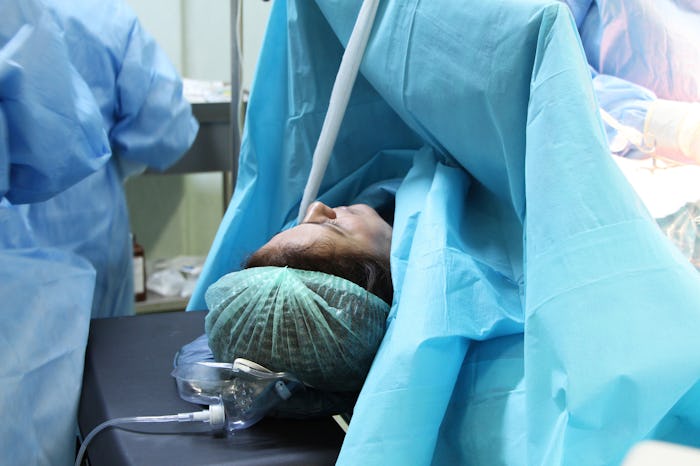Life

9 Reasons You May Need A C-Section
In mainstream culture (and in many mom's mental image of delivery), vaginal deliveries are portrayed as the norm. In reality, however, things often work out a bit differently than you may expect or even want. C-sections are a very common method of delivery, but many moms don't anticipate needing one until their doctor brings it up in an emergency situation. But the truth is there are many reasons you may need a C-section that don't all involve an emergency situation.
In fact, according to Stat News, about one in three births in the U.S. happen via C-section. Although that number is much higher than it might need to be, the majority of these C-sections are elective or due to non-emergency reasons that may make this procedure the easier delivery option.
Whatever reason you have for choosing a C-section (or maybe you didn't choose one, but your OB-GYN thinks it will be best), know that it doesn't necessarily mean something is wrong with your pregnancy. However your baby is delivered, the safety and health of the two of you is the top priority. The reasons for a C-section are many, but the outcome — a happy, healthy baby — is always worth the surgery.
1You're Having Multiples
Although it's not always necessary for twins or multiples to be delivered via C-section, it is common. According to Parents, in cases where there are more than two babies, a C-section is especially prevalent since, logistically, monitoring the babies is very difficult.
2You Have An Infection That Puts Your Baby (Or You) At Risk
According to the March of Dimes, an infection like HIV or genital herpes usually necessitates a C-section to minimize the risk to the baby.
3There's An Issue With The Placenta
In rare cases, women experience issues with the placenta that make a C-section necessary. According to the American Pregnancy Association (APA), placenta previa or a placental abruption are both rare conditions that will require C-section deliveries.
4You've Had A Previous C-Section
Although vaginal birth after C-section (VBAC) is possible and increasingly encouraged for some women, a repeat C-section is necessary. According to Fit Pregnancy, VBAC and repeat C-sections have no difference in health outcomes ,and the decision is usually up to whatever the mother feels most comfortable with.
5Your Baby Is Breech
When a baby is positioned with their feet facing down, they're said be in a breech position. Although it's possible (and generally safe) to deliver a breech baby vaginally, in some cases, according to one piece from The New York Times, a C-section is the safer route for breech babies.
6There Is A Cord Prolapse
According to What To Expect, an umbilical cord prolapse is a rare and (usually) non-threatening scenario in which the umbilical cord enters the birth canal before the baby does. In some cases, this can lead to the baby not getting enough oxygen and needing to be delivered via C-section.
7Fetal Distress Or Failure To Progress In Labor
An emergency C-section is usually caused by fetal distress or failure to progress in labor, according to Kid's Spot. Emergency C-sections aren't planned and are necessary to keep both the mother and the baby safe.
8Your Baby Is Large
In some cases, like for women with gestational diabetes, babies will be larger than normal and need to be delivered via C-section, Healthline noted.
9You Have Preeclampsia
According to Parents, the vast majority of women with preeclampsia delivery happy, healthy babies, they may need to have a C-section to deliver. Since women with preeclampsia tend to deliver their babies early, a C-section is more common because it puts less strain on the baby who is less developed than a full term baby.